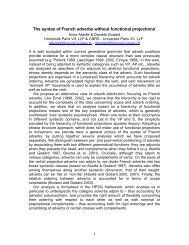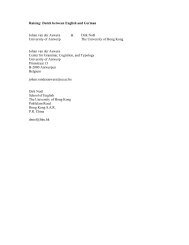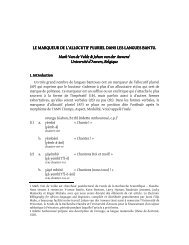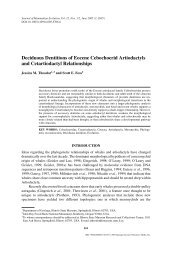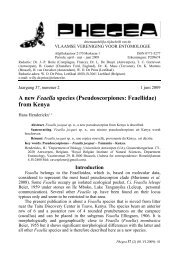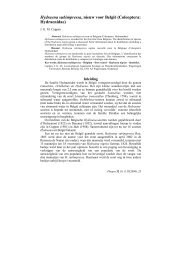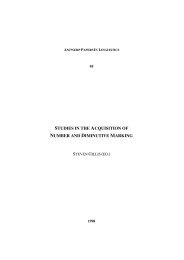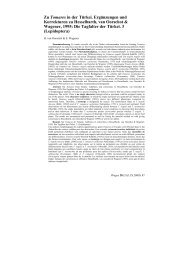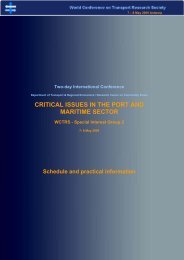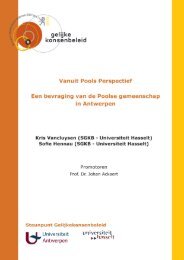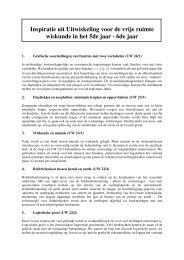Turtles as hopeful monsters
Turtles as hopeful monsters
Turtles as hopeful monsters
Create successful ePaper yourself
Turn your PDF publications into a flip-book with our unique Google optimized e-Paper software.
What the papers say<br />
Figure 3. The relationship of the shoulder blade to the carapace in turtles (Graptemys geographica).<br />
later developmental stages. In the turtle carapace, therefore,<br />
the distinction of endoskeleton versus exoskeleton becomes<br />
problematic. It had been recognized earlier that the endoskeleton<br />
versus exoskeleton cannot be distinguished on the b<strong>as</strong>is<br />
of histogenesis, but must be defined with reference to a<br />
phylogenetic framework. (17,18) Exoskeletal elements are<br />
homologous to structures that in the ancestral condition<br />
combine bone, dentine and enamel, i.e., develop at the<br />
ectoderm±mesoderm interface. Thus, the bony scales of a<br />
trout, or the osteoderms of a crocodile, are exoskeletal,<br />
because these are structures that ultimately can be traced<br />
back (are homologous) to the heavy scales of early fishes that<br />
combine bone, dentine and enamel in a three-layered scale.<br />
By contr<strong>as</strong>t, endoskeletal elements are elements that in the<br />
ancestral condition are preformed in cartilage, while the<br />
cartilaginous stage may be deleted in the descendant<br />
(membrane bone). In the turtle carapace, the neural and<br />
costal plates ossify from, and in continuity with, the periost of<br />
their endoskeletal component. This pattern of ossification<br />
corresponds to the definition of Zuwachsknochen, (18) i.e.,<br />
bone that complements an endoskeletal element that is itself<br />
preformed in cartilage. As such, neural and costal plates are<br />
endoskeletal components of the turtle carapace, and cannot<br />
be derived from a hypothetical ancestral condition by fusion of<br />
exoskeletal osteoderms. All other parts of the turtle carapace<br />
are exoskeletal, however.<br />
The origin of a new body plan<br />
The turtle body plan is evidently highly derived, indeed unique<br />
among tetrapods. The problem for an evolutionary biologist is<br />
to explain these transformations in the context of a gradualistic<br />
process. Given the recently obtained developmental evidence,<br />
(1,11,13) the theory of ``correlated progression'' (10) presents<br />
an incomplete explanation of the turtle body plan:<br />
formation of the carapace is not simply the consequence of a<br />
fusion of osteoderms, and the location of the scapula inside the<br />
rib cage is not the result of a backward migration of the pectoral<br />
girdle.<br />
Early in the 19th century, EÂ tienne Geoffroy Saint-Hilaire<br />
raised the question of how the lung of a reptile could be<br />
transformed into the lung of a bird? He found it impossible to<br />
postulate that the lung of a reptile, specialized in its own way,<br />
could transform into an even more specialized lung of a bird.<br />
But he recognized that both reptiles and birds share similar<br />
early embryonic rudiments of the lung, and he hypothesized<br />
that these could develop along different trajectories in the<br />
two groups due to a minor change in early ontogenetic<br />
development: ``It only required an `accident' [a change] that<br />
990 BioEssays 23.11



